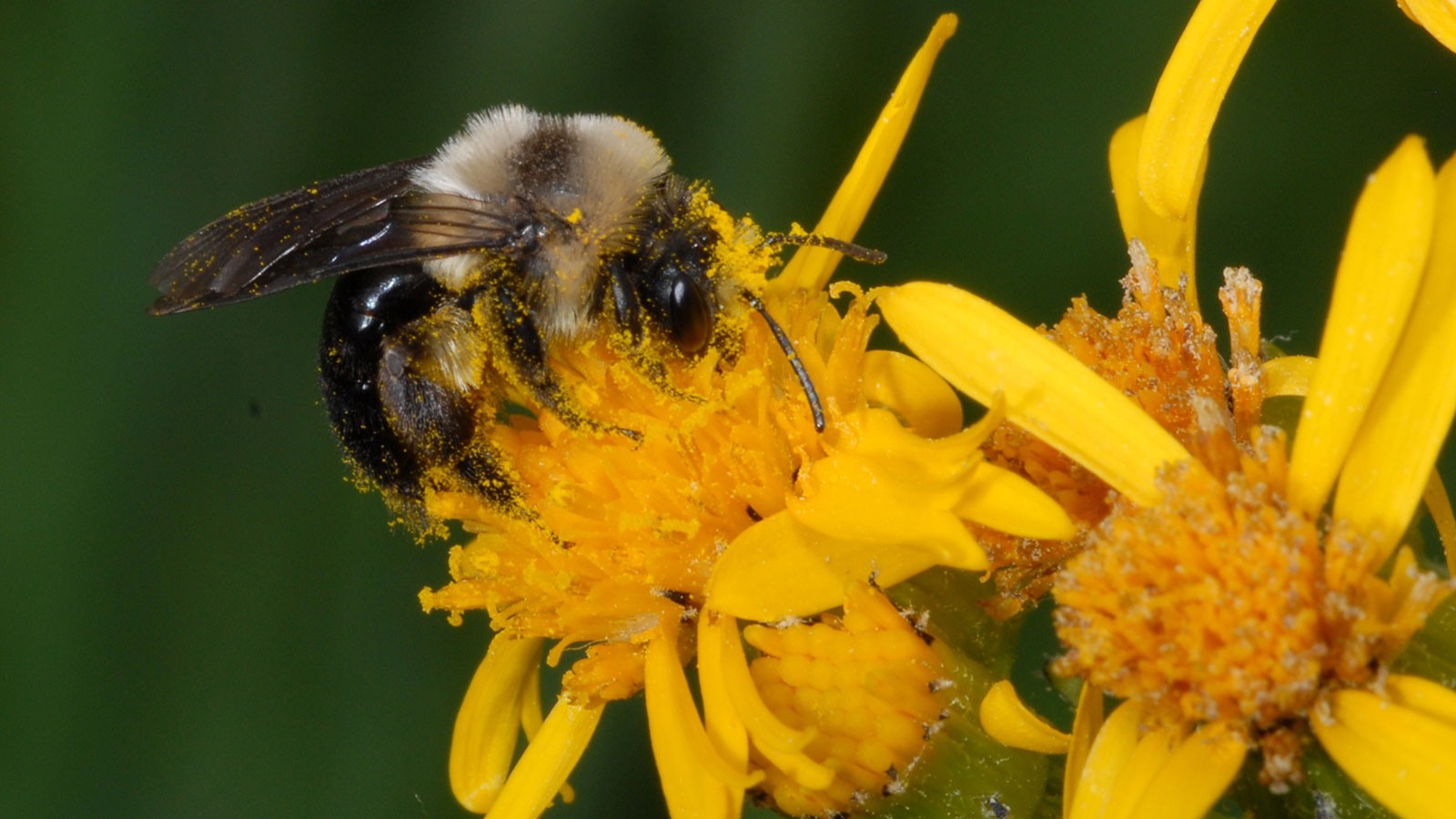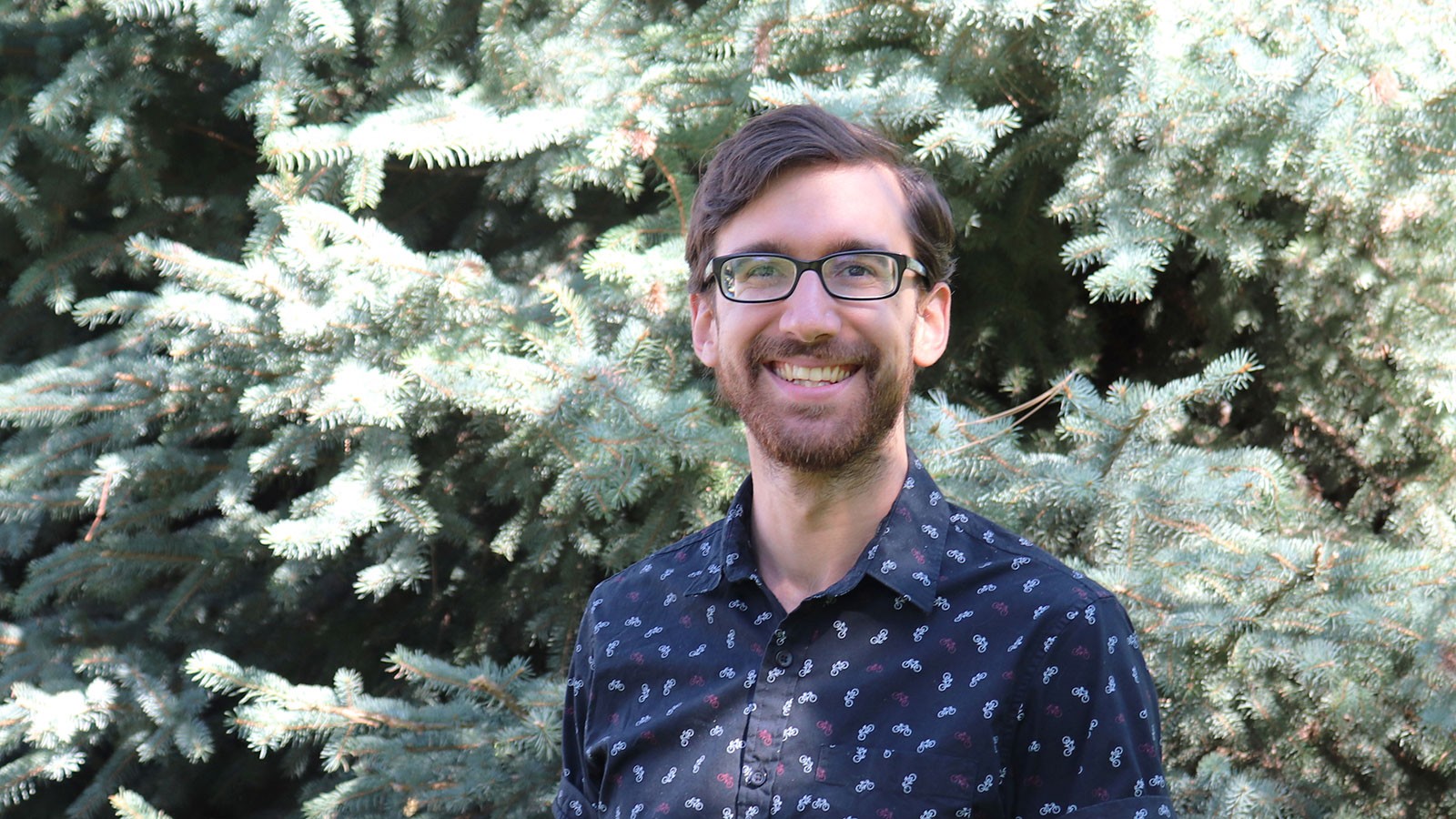Out of Sync: USU Ecologists Report Climate Change Affecting Bee, Plant Life Cycles
By Mary-Ann Muffoletto |
A black-banded miner bee on Rocky Mountain goldenrod near Colorado's Rocky Mountain Biological Laboratory. USU ecologists were part of an NSF-funded, multi-institution study of temporal mismatch in pollinator-plant systems. David Inouye, RMBL.
Bees and flowers seem inseparable harbingers of spring, but what happens when pollinators emerge later than their sources of nectar and pollen? Reporting on the first community-wide assessment of 67 bee species of the Colorado Rockies, ecologists Michael Stemkovski of Utah State University and Rebecca Irwin of North Carolina State University say “phenological mismatch,” changing timing of life cycles between bees and flowers, caused by climate change, has the potential to disrupt a mutually beneficial relationship.
“We analyzed time-series abundance data collected at 18 sites around the Rocky Mountain Biological Laboratory (RMBL) in the Elk Mountains of western Colorado during a nine-year, National Science Foundation-funded bee monitoring project,” says Stemkovski, doctoral student in USU’s Department of Biology and the USU Ecology Center.
He and Irwin, senior author, along with Stemkovski’s faculty mentor Will Pearse of Imperial College London and Terry Griswold of the USDA-ARS Pollinating Insects Research Unit at USU, and colleagues from RMBL, University of Texas at Austin, University of Manitoba, Central Texas Melittological Institute, Royal Saskatchewan Museum, Texas A&M University, Florida State University and University of Maryland, published findings in the August 19, 2020 issue of Ecology Letters.
“We find bee emergence timing is advancing with snowmelt timing, but bee phenology – timing of emergence, peak abundance and senescence – is less sensitive than flower phenology,” says Irwin, professor of applied ecology at NCSU. “Given global concerns about pollinator declines, the research provides important insight into the potential for reduced synchrony between flowers and their pollinators under climate change.”
Previous studies focused primarily on temperature, Stemkovski says, but this study probed the effects of topography and bee species traits, as well.
“Elevation played a large role in when bees start foraging, as well as the bees’ functional traits, such as whether bees nested below or above ground, and the life stage in which they overwintered,” he says. “We found all of these factors predicted bee emergence, but the most important factor was snowmelt timing.”
If bees begin foraging later than spring plants reach their flowering peak, consequences could be reduced abundance of pollinators, from limited sustenance, and reduced abundance of plants, from limited pollination.
“In the short-term, we expect mutualist species to suffer fitness losses,” says Stemkovski, a 2018 NSF Graduate Research Fellow. “In the long-term, bees and plants may be able to adapt and reestablish some synchrony, unless climate change outpaces the rate of adaptation.”
USU Biology/Ecology doctoral student Michael Stemkovski, a 2018 NSF Graduate Research Fellow, is lead author of a paper in 'Ecology Letters' detailing climate change effects on pollinator-plant life cycles. M. Muffoletto.
WRITER
Mary-Ann Muffoletto
Public Relations Specialist
College of Science
435-797-3517
maryann.muffoletto@usu.edu
CONTACT
Michael Stemkovski
NSF Graduate Research Fellow
Department of Biology and USU Ecology Center
919-924-2633
m.stemkovski@gmail.com
TOPICS
Research 877stories Environment 263stories Ecology 173stories Climate 151stories Ecosystems 129stories Bees 27storiesComments and questions regarding this article may be directed to the contact person listed on this page.









